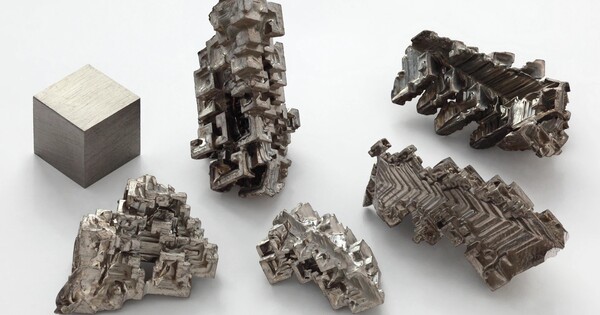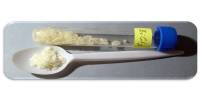Bismuth arsenide is an inorganic compound, with the chemical formula BiAs. Its α-modification and β-modification have been reported in theoretical calculations. It is a semiconductor with unique electronic properties, often studied for its potential applications in electronics and optoelectronics. It usually appears as a metallic solid.
Its properties make it suitable for use in infrared detectors and thermoelectric devices. It can also be useful in certain types of high-speed electronics. It is relatively stable under normal conditions but can react with acids to form arsenic acid and bismuth salts.
Preparation
Bismuth arsenide can be prepared by reacting bismuth chloride and tris(trimethylsilyl)arsenic in toluene at room temperature:
BiCl3 + As[Si(CH3)3]3 → BiAs + 3(CH3)3SiCl
Properties
Bismuth arsenide typically has a narrow bandgap and exhibits high mobility, which can be advantageous in various electronic applications. It is a semiconductor with electrical properties that can be influenced by temperature and pressure.
- Chemical formula: BiAs
- Molar mass: 283.9
- Appearance: solid
- Structure: It crystallizes in a rhombohedral or hexagonal crystal system.
- Density: The density of bismuth arsenide is around 7.9 g/cm³.
- Melting Point: The melting point of bismuth arsenide is approximately 820°C (1508°F).
Bismuth arsenide has interesting optical properties and is often used in various optoelectronic applications. It can exhibit different absorption and emission spectra.
Applications
Bismuth arsenide is used in the manufacturing of infrared detectors and thermoelectric devices due to its semiconductor properties. It is also studied in condensed matter physics and materials science for its unique electronic properties and potential uses in advanced technologies.
Safety
Both bismuth and arsenic are toxic elements, so handling bismuth arsenide requires proper safety precautions to avoid exposure to harmful substances.
















